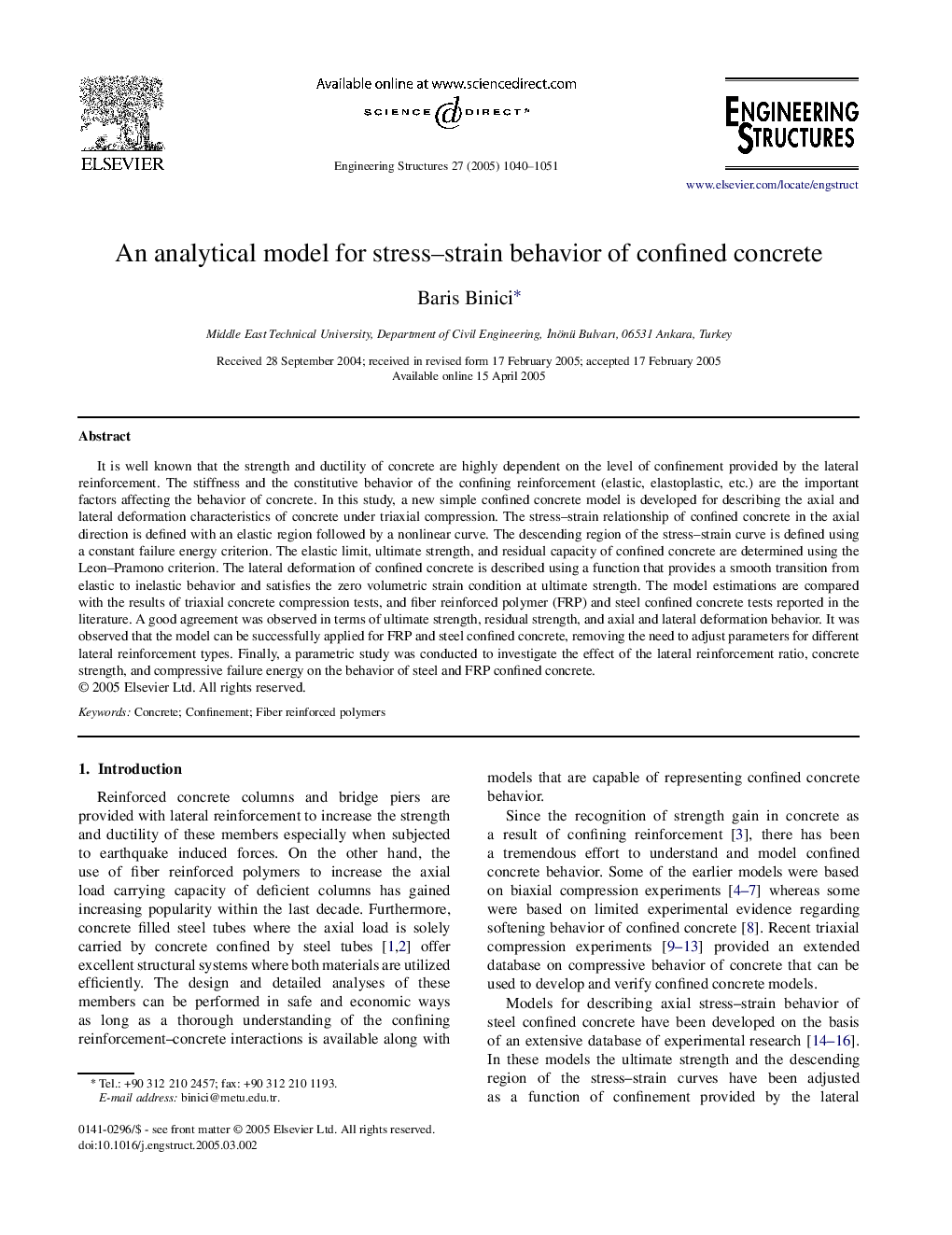| Article ID | Journal | Published Year | Pages | File Type |
|---|---|---|---|---|
| 10287112 | Engineering Structures | 2005 | 12 Pages |
Abstract
It is well known that the strength and ductility of concrete are highly dependent on the level of confinement provided by the lateral reinforcement. The stiffness and the constitutive behavior of the confining reinforcement (elastic, elastoplastic, etc.) are the important factors affecting the behavior of concrete. In this study, a new simple confined concrete model is developed for describing the axial and lateral deformation characteristics of concrete under triaxial compression. The stress-strain relationship of confined concrete in the axial direction is defined with an elastic region followed by a nonlinear curve. The descending region of the stress-strain curve is defined using a constant failure energy criterion. The elastic limit, ultimate strength, and residual capacity of confined concrete are determined using the Leon-Pramono criterion. The lateral deformation of confined concrete is described using a function that provides a smooth transition from elastic to inelastic behavior and satisfies the zero volumetric strain condition at ultimate strength. The model estimations are compared with the results of triaxial concrete compression tests, and fiber reinforced polymer (FRP) and steel confined concrete tests reported in the literature. A good agreement was observed in terms of ultimate strength, residual strength, and axial and lateral deformation behavior. It was observed that the model can be successfully applied for FRP and steel confined concrete, removing the need to adjust parameters for different lateral reinforcement types. Finally, a parametric study was conducted to investigate the effect of the lateral reinforcement ratio, concrete strength, and compressive failure energy on the behavior of steel and FRP confined concrete.
Related Topics
Physical Sciences and Engineering
Earth and Planetary Sciences
Geotechnical Engineering and Engineering Geology
Authors
Baris Binici,
